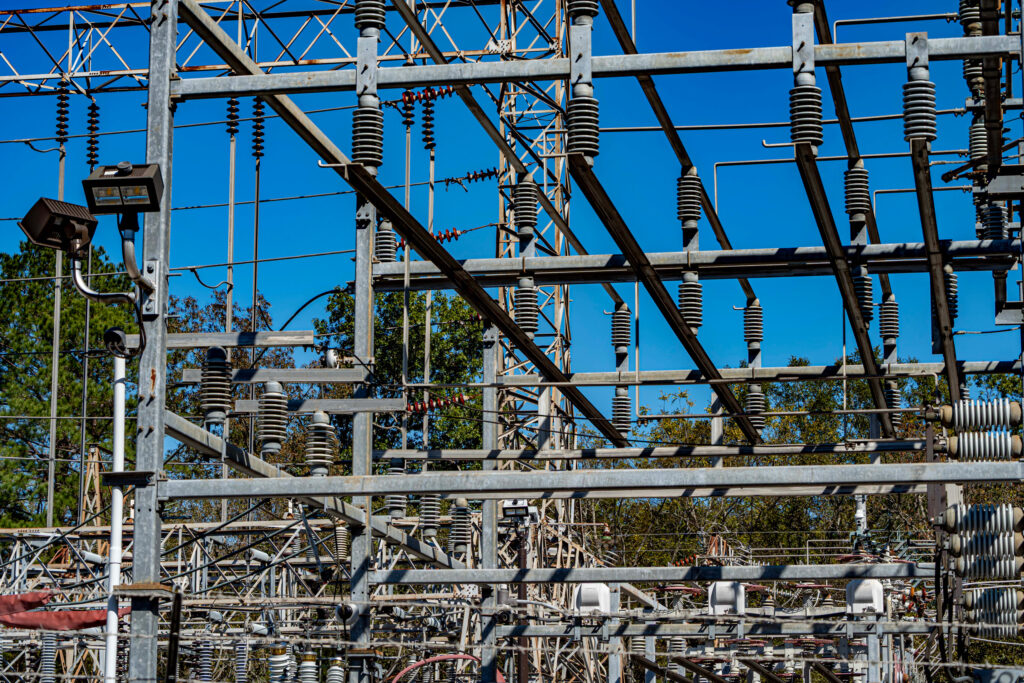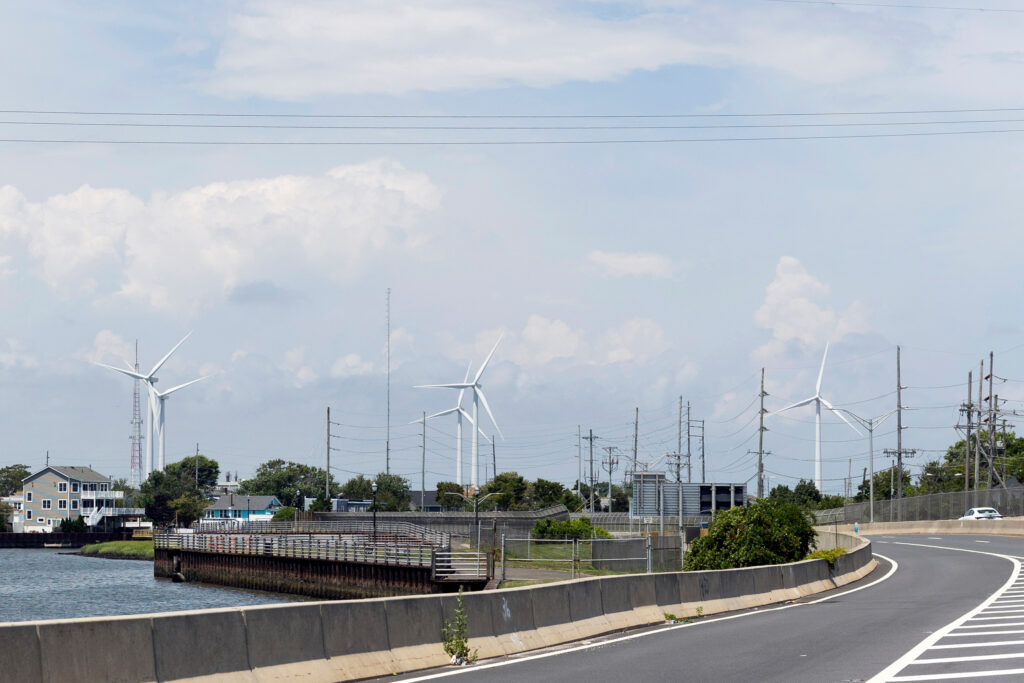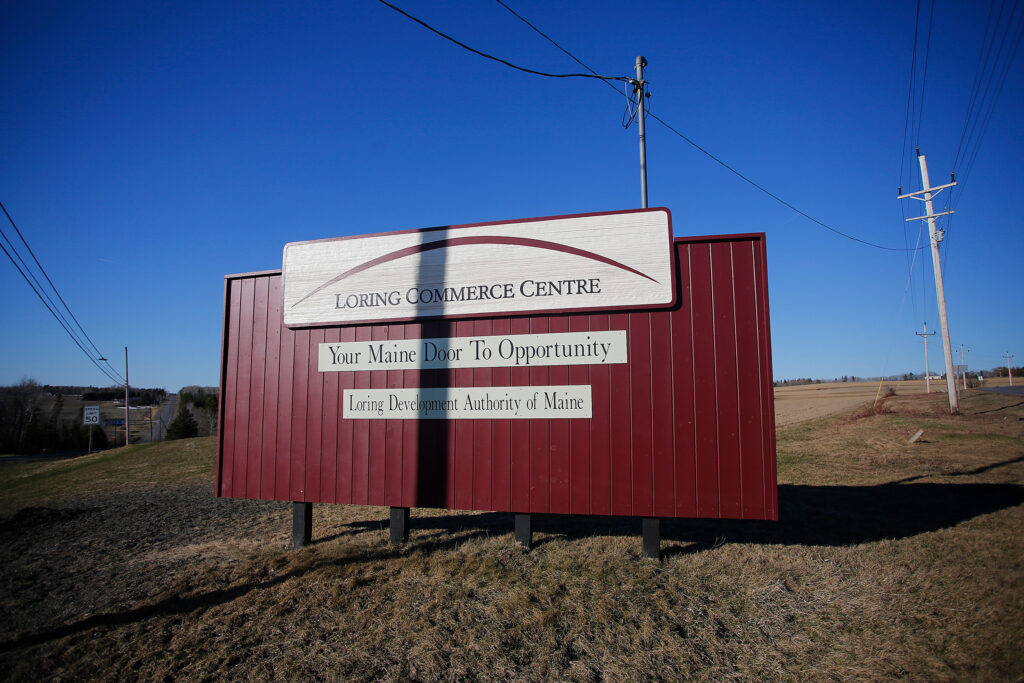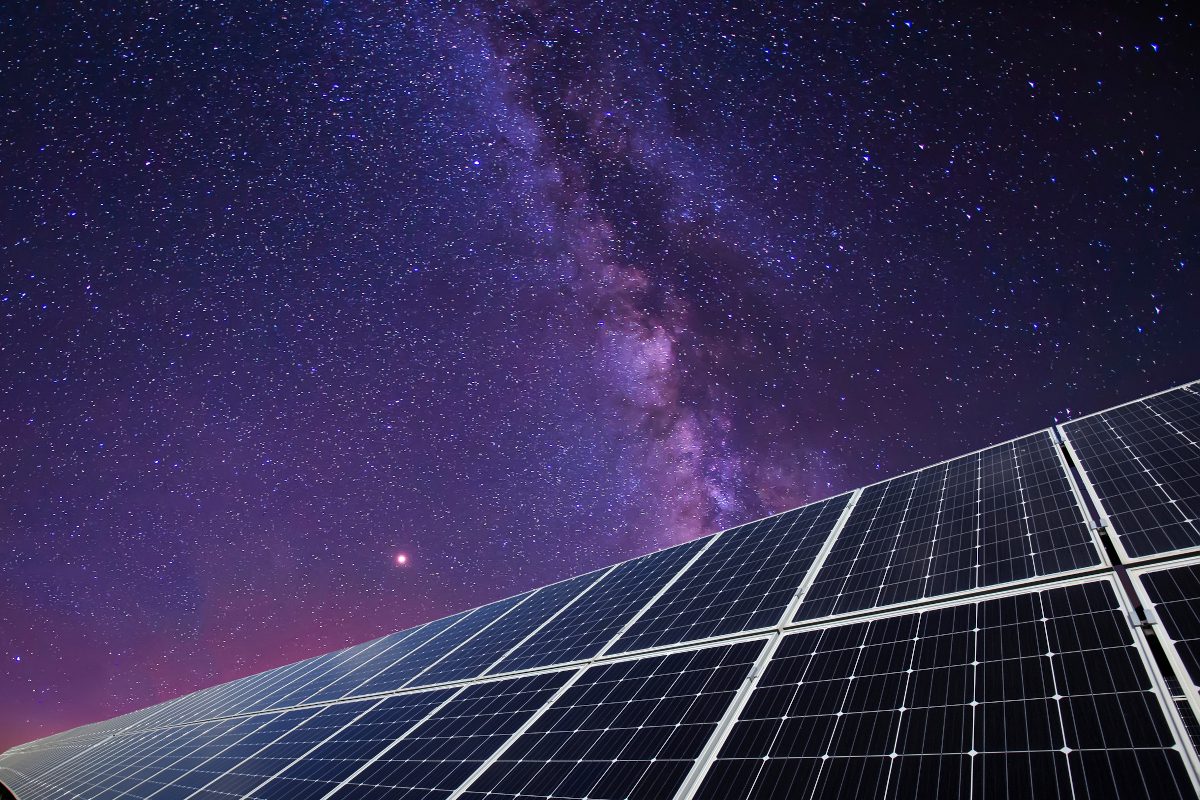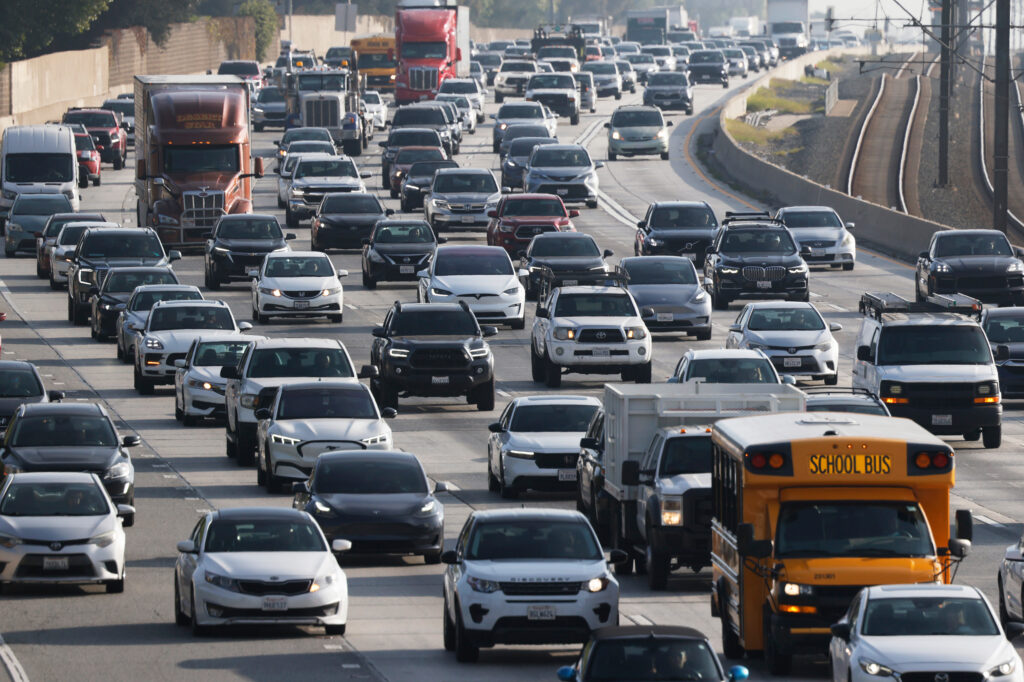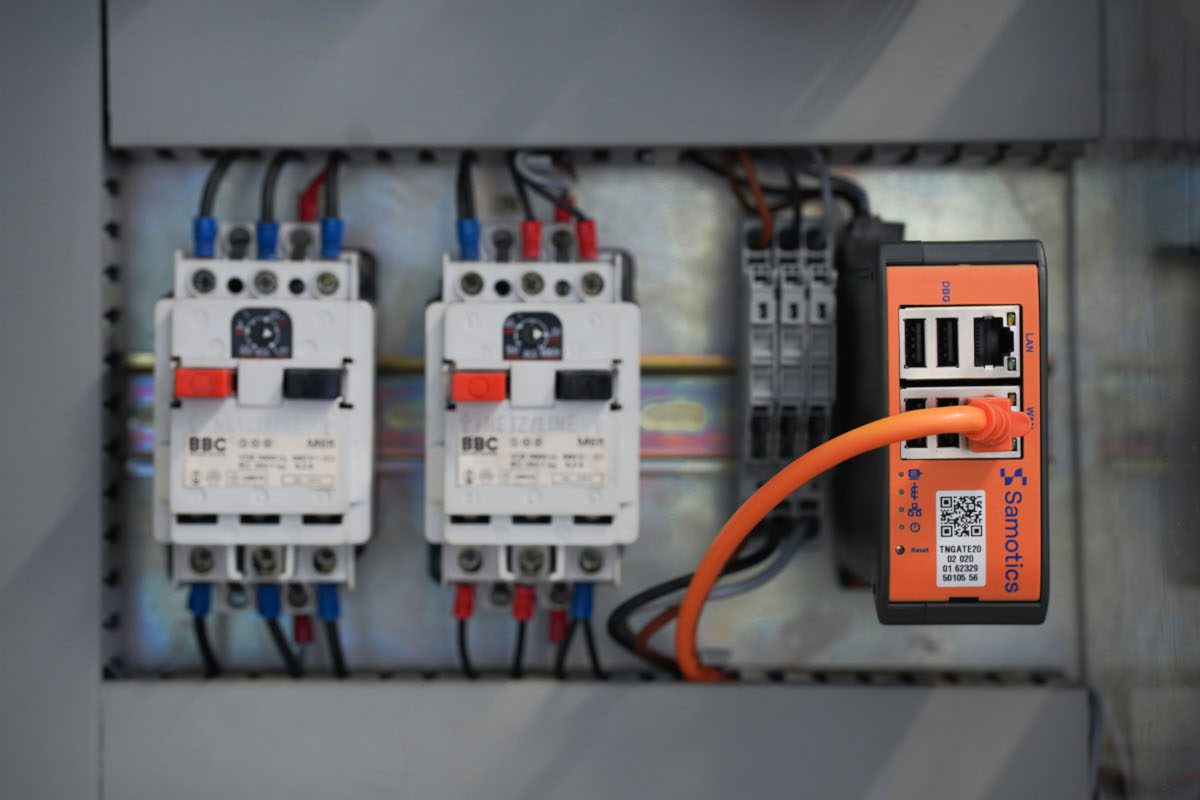A process designed to make sure a swath of the country has reliable electricity has become an example of how not to manage a complex system during a time of rapid change.
PJM Interconnection, the organization that oversees the country’s largest grid region, held its annual “capacity” auction last week to secure the resources needed to meet projected electricity demand in 2025-26.
It resulted in a price surge, with a projected cost of $14 billion, compared to $2.2 billion from the previous auction, for 2024-25.
Explore the latest news about what’s at stake for the climate during this election season.
The auction exists so PJM can have assurance that there will be enough electricity available to meet peak demand. Power plants offer the prices that they want to get paid in exchange for agreeing to be available when needed. When resources are tight relative to demand, prices go up, as happened last week.
The winners include anyone operating a coal, natural gas or nuclear plant that may be struggling to stay afloat financially. Those resources make up the large majority of the power sources that will get paid, while wind and solar each make up a single percent of sources.


“It just shows how poor the planning is,” said Ric O’Connell, executive director of GridLab, a nonprofit that does technical analysis for regulators and renewable power advocates. He said “it’s depressing” that wind and solar make up such a tiny part of the mix.
Consumers across PJM’s territory, which runs from Chicago to North Carolina, who indirectly pay these costs through their electricity bills, lose when prices go up.
Other losers include the climate, the environment and the energy transition, which seem to be near the bottom of PJM’s priority list.
I understand that a regional grid operator’s main responsibility is to keep the lights on, and that PJM wants to be viewed as a neutral party in a complex market. But it’s difficult to look at last week’s results and believe PJM is equipped to be a leader in the shift to the grid of the future.
PJM is being whipsawed by competing factors:
- Electricity demand is projected to increase due to overall growth and the construction of data centers and factories.
- Many coal-fired power plants in PJM territory have closed because of pollution concerns and high costs of operation, and not enough new plants have come online to replace the lost power.
- PJM has a slow and cumbersome process for approving grid connections for new power plants, which means thousands of projects—most of them solar farms or battery storage—are left to wait in the equivalent of a traffic jam before they can go online.
- Recent winter storms showed that some resources—most notably natural gas power plants—do not perform at the level previously assumed. As a result, PJM has adjusted its expectations for a variety of power sources and needs to add resources to make up the difference.
Customers are going to pay more, but it’s difficult to say how much. For perspective, the payments made as a result of the capacity auction were about 8 percent of the average wholesale price of electricity in PJM territory last year. Exelon, a utility company with customers across PJM’s footprint, has said the auction is likely going to lead to rate increases of at least 10 percent.


Here’s some back-of-the-envelope math: A hypothetical 1,000-megawatt coal plant in PJM territory would earn more than $80 million for the period covered by the auction, which is part of the $14.4 billion in projected costs. This income is about 10 times what it would have been at prices from the prior auction.
A power plant usually makes most of its money from selling electricity into the grid, but payments from the PJM auction can be an important secondary source of income. For a plant on the edge of closing in the face of competition, an increase in PJM payments can be a lifeline.
Ideally, the auction process would provide a market signal that the region needs more power plants and developers would start building. But it doesn’t work that way, and hasn’t worked that way in the decade-plus I’ve been writing about energy in the PJM region.
A one-year spike in payments isn’t going to make much of a difference to someone deciding whether to invest billions of dollars in assets that will operate for decades.
The chief beneficiaries are owners of the plants that are already built. The major players are utilities, along with some independent power producers.
“The governance and stakeholder input around market rules is, in large part, still fairly dominated by market participants and incumbents,” said Brendan Pierpont, director of electricity modeling for the think tank Energy Innovation.
The result, he said, is “institutional inertia.”
While existing power plants will get paid for functioning, developers have proposed thousands of projects in PJM territory that will not be online by 2025-26 because the grid operator is processing applications for interconnection at a glacial pace.
At the end of last year, PJM had 3,309 projects waiting in its queue, according to the Lawrence Berkeley National Laboratory. The large majority of those projects are solar farms or battery storage systems. (No other grid region comes close to PJM in terms of the number of projects waiting for connections, which isn’t surprising since PJM is the largest in terms of number of customers served.)
A project in the queue hasn’t been built yet, and many of them are speculative in nature, without permits or financing. But a large number of projects are viable and the main thing delaying their construction is that PJM is not moving quickly enough.
If more of those solar and storage projects were on track to go online by 2025, the auction likely would have yielded lower prices for consumers.
I reached out to PJM to get an idea of how they view the results, and how they respond to the criticism.
Spokesman Daniel Lockwood explained the high prices by listing factors similar to what I have in my bullet points above. He said PJM continues to implement a plan to reform and accelerate its approval of interconnection requests, with expectations that 72,000 megawatts of new power plants will be processed in 2024 and 2025.
He noted that some of the problems with deploying new power plants are outside of PJM’s control, including an estimated 38,000 megawatts of resources that have received approval for interconnection but are facing delays because of financing, permits or other issues.
“PJM remains concerned with this slow pace of new generation construction and is considering ways to accelerate those who can successfully overcome those challenges and build,” he said.
Let’s see what happens. For now, the clock is ticking, and the momentum for the energy transition is being sapped by an expensive and inefficient process.
Other stories about the energy transition to take note of this week:
Innovative Transmission Projects in 18 States Get $2.2 Billion From Biden Administration: The Department of Energy has awarded $2.2 billion to projects that could expand grid capacity by about 13 gigawatts, as Ethan Howland reports for Utility Dive. The projects include about 600 miles of new transmission lines and 400 miles of existing lines that are getting enhancements that include the installation of larger wires.
SunPower, a Solar Icon Once Valued in the Billions, Files for Bankruptcy: SunPower has filed for bankruptcy, marking the collapse of a one-time leader in American solar, as Eric Wesoff reports for Utility Dive. The company will sell some of its assets to a recently formed solar installation company, Complete Solaria. SunPower survived the market bust of the early 2010s, but it was felled by low-cost competition from China and its own strategic errors.
Climate Advocates Rally Behind Walz as Harris’ VP Pick: Climate and clean energy advocates have reason to cheer the selection of Minnesota Gov. Tim Walz as a running mate for Democratic presidential candidate Kamala Harris, as my colleague Kristoffer Tigue reports. Walz’s track record includes signing a measure that calls for his state to shift to 100 percent carbon-free electricity by 2040.
Midwestern Farmers Who Say Yes to Solar Power Face Neighbors’ Wrath: Michigan has a new law that limits the ability of local governments to stop renewable energy projects. As a result, projects are much more likely to move forward, but the landowners who lease their property to developers are still encountering their neighbors’ bitter feelings, as Drew Hutchinson and Daniel Moore report for Bloomberg.
Here Are The Upcoming Electric Cars For 2024, 2025 and 2026: The selection of electric vehicles is about to expand by a lot. Ty Duffy of InsideEvs has this rundown of the models that will be on the market later this year and in 2025 and 2026.
Inside Clean Energy is ICN’s weekly bulletin of news and analysis about the energy transition. Send news tips and questions to [email protected].
About This Story
Perhaps you noticed: This story, like all the news we publish, is free to read. That’s because Inside Climate News is a 501c3 nonprofit organization. We do not charge a subscription fee, lock our news behind a paywall, or clutter our website with ads. We make our news on climate and the environment freely available to you and anyone who wants it.
That’s not all. We also share our news for free with scores of other media organizations around the country. Many of them can’t afford to do environmental journalism of their own. We’ve built bureaus from coast to coast to report local stories, collaborate with local newsrooms and co-publish articles so that this vital work is shared as widely as possible.
Two of us launched ICN in 2007. Six years later we earned a Pulitzer Prize for National Reporting, and now we run the oldest and largest dedicated climate newsroom in the nation. We tell the story in all its complexity. We hold polluters accountable. We expose environmental injustice. We debunk misinformation. We scrutinize solutions and inspire action.
Donations from readers like you fund every aspect of what we do. If you don’t already, will you support our ongoing work, our reporting on the biggest crisis facing our planet, and help us reach even more readers in more places?
Please take a moment to make a tax-deductible donation. Every one of them makes a difference.
Thank you,








